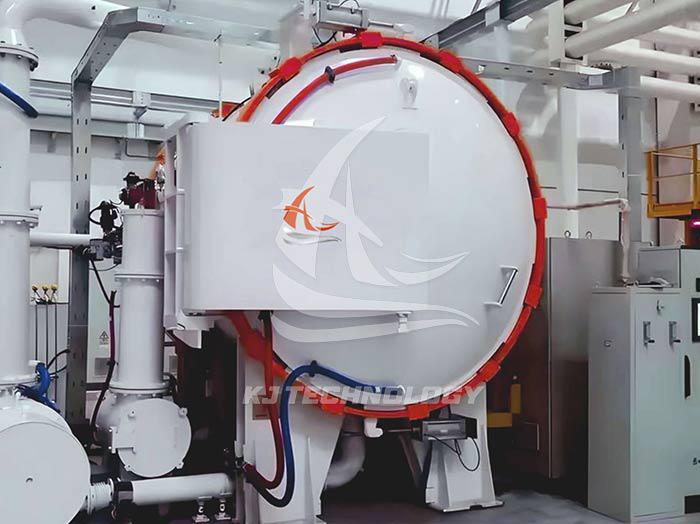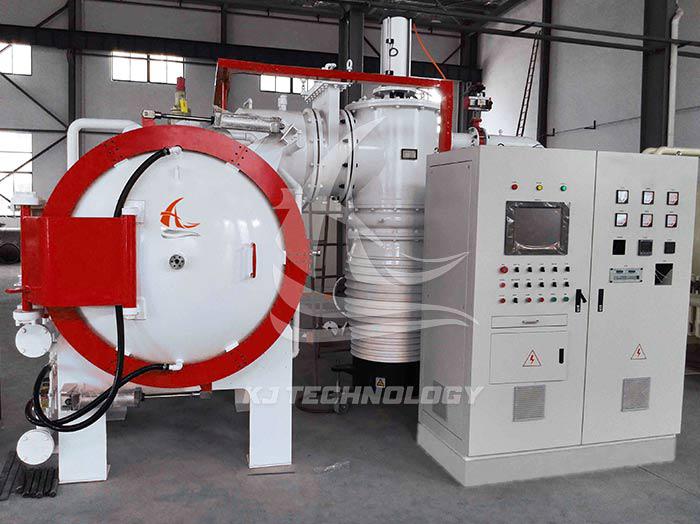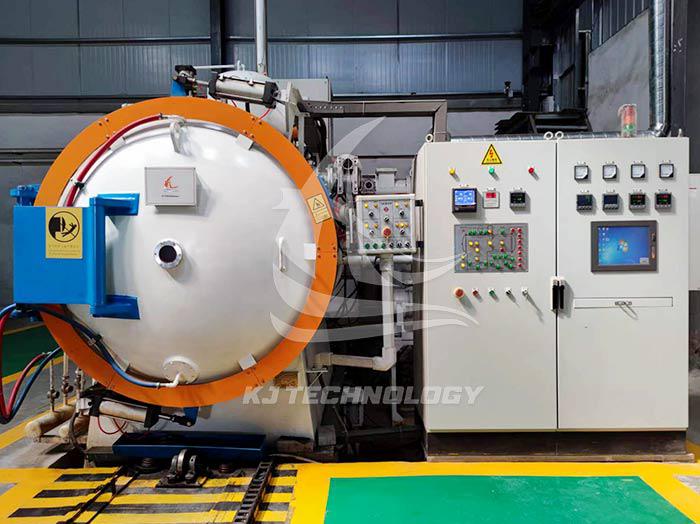What are the processes for sintering nitrides in customized vacuum sintering furnaces?
 04-15-2025 Author: KJ technology
04-15-2025 Author: KJ technology
The process of sintering nitrides in customized vacuum sintering furnaces usually involves multiple key steps and parameter control. The following is a summary of this process:
1. Process steps
Raw material preparation:
Select appropriate nitride powder to ensure its purity and particle size meet sintering requirements.
Add sintering aids such as sintering accelerators, binders, etc. as needed to improve sintering performance and product properties.
Furnace loading:
After mixing the nitride powder and sintering aids evenly, they are loaded into a customized vacuum sintering furnace.
Pay attention to the furnace loading method and density control to ensure the uniformity and density of the material during the sintering process.
Vacuum pumping:
After closing the furnace door, start the vacuum system and gradually reduce the pressure inside the furnace to the required vacuum level.
The control of vacuum degree is crucial to avoid oxidation and impurity introduction.
Heating and sintering:
Gradually increase the furnace temperature to the sintering temperature according to the preset sintering curve.
The choice of sintering temperature depends on the type of nitride and the desired sintering effect.
During the sintering process, it is necessary to precisely control the heating rate and holding time to ensure sufficient sintering and densification of the material.
Cooling:
After sintering is completed, slowly reduce the furnace temperature according to the set cooling rate.
The control of cooling rate is crucial for avoiding material cracking and maintaining its performance stability.
2. Key parameter control
Vacuum degree:
The control of vacuum degree is crucial to avoid oxidation and impurity introduction.
Generally speaking, the vacuum degree during the sintering process should be maintained at a high level to ensure the purity and performance of the material.
Sintering temperature:
The choice of sintering temperature depends on the type of nitride and the desired sintering effect.
Excessive sintering temperature may lead to material overburning and performance degradation, while excessively low sintering temperature may result in insufficient sintering and insufficient density of the material.
Heating rate and holding time:
The control of heating rate and holding time is crucial for ensuring sufficient sintering and densification of materials.
Generally speaking, the heating rate should not be too fast to avoid internal stress in the material that may cause cracking.
The length of insulation time depends on the type of material and the required sintering effect.
3. Process characteristics
Avoid oxidation:
Sintering in a vacuum environment can effectively prevent nitride materials from reacting with oxygen in the air during the sintering process, thereby maintaining the purity and performance of the material.
Precise control:
Through a computer control system, precise control of the sintering process can be achieved, including control of parameters such as temperature, pressure, and atmosphere.
This helps to achieve ideal sintering results and material properties.
Strong adaptability:
Customized vacuum sintering furnaces can be designed according to different nitride materials and sintering process requirements to meet various special needs.








